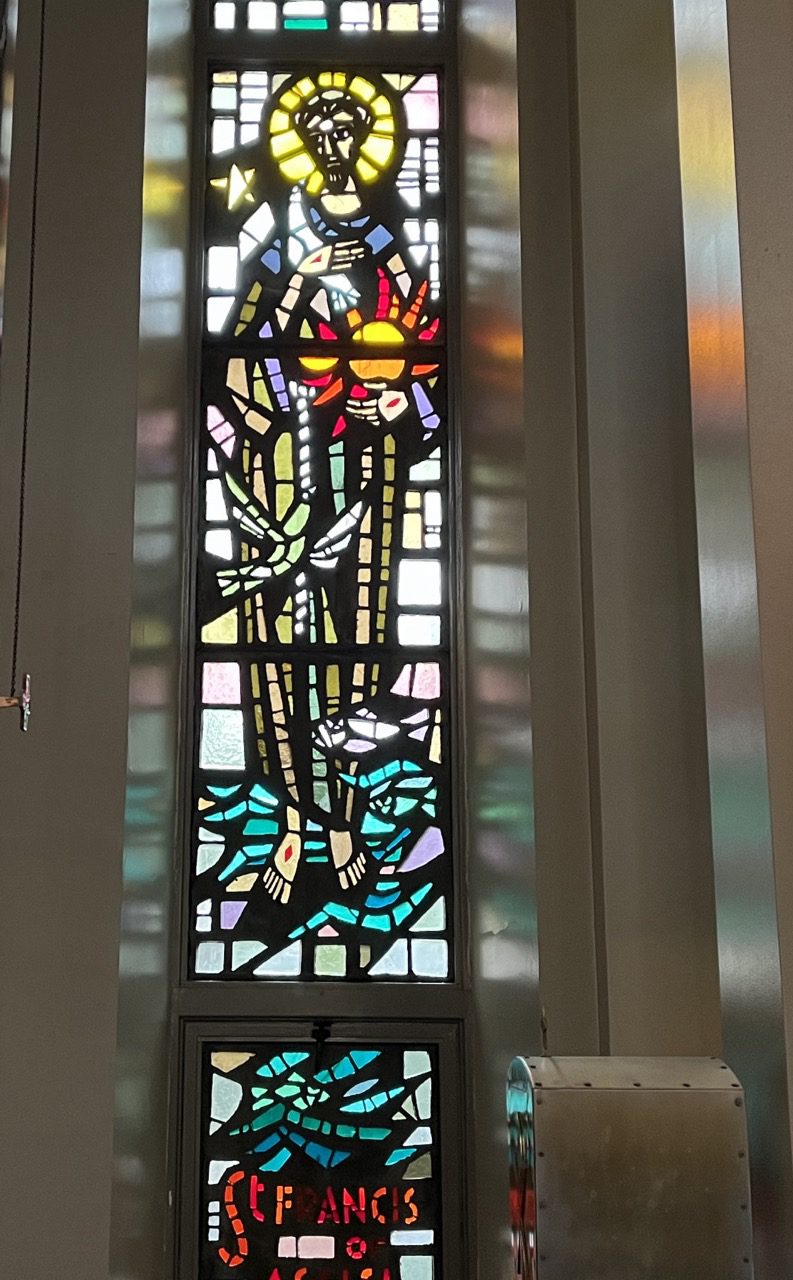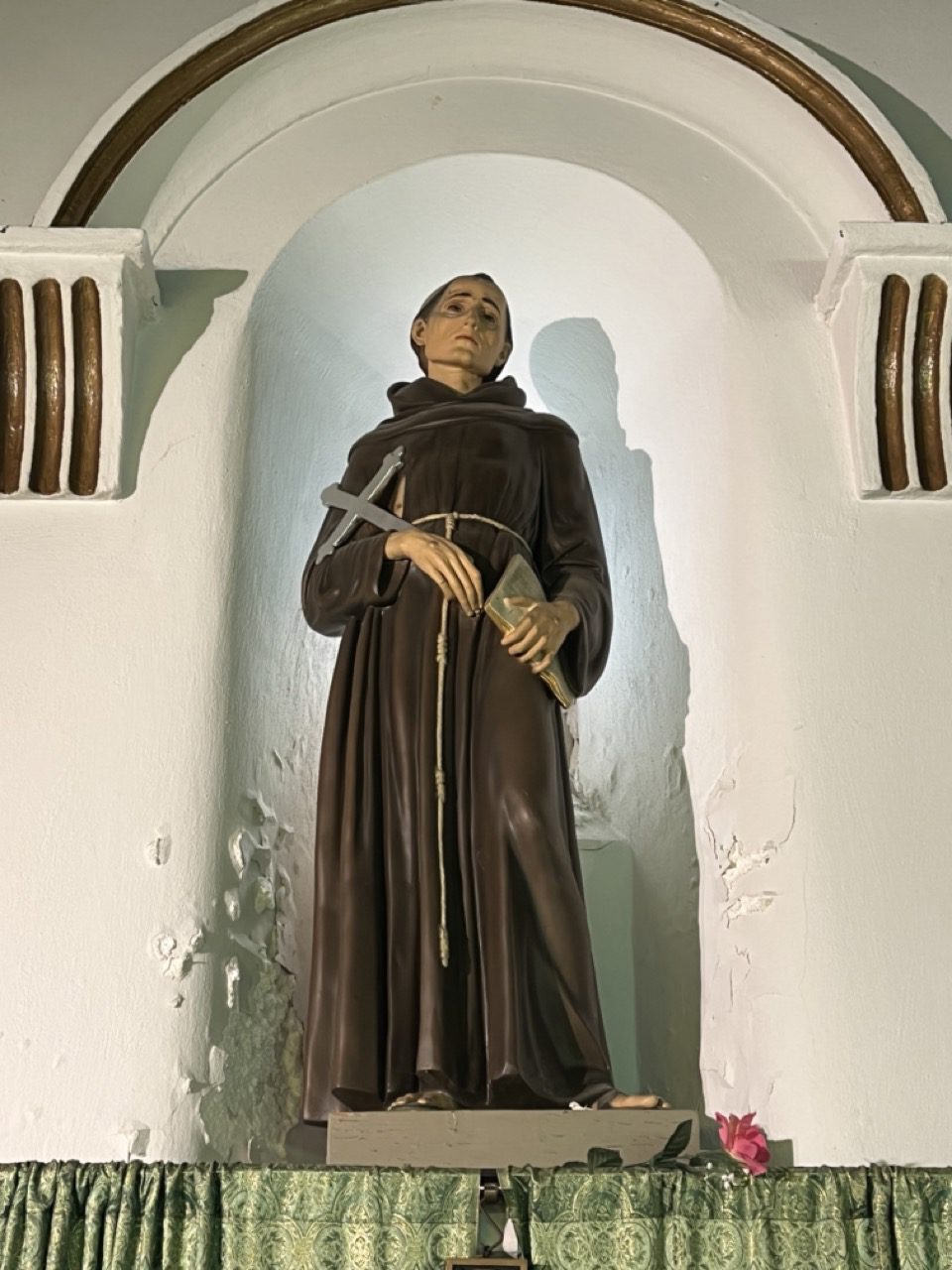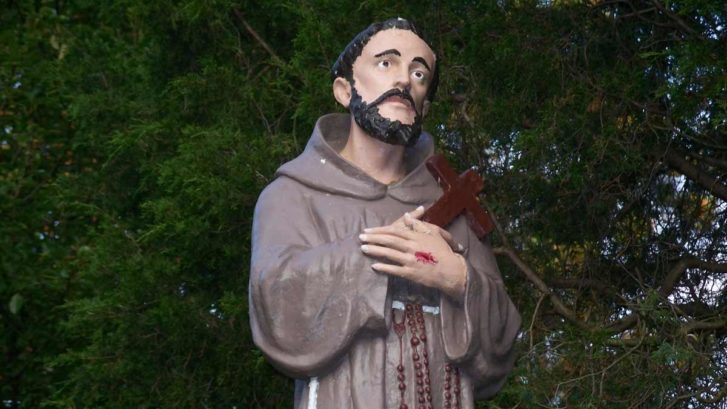St. Francis once lived in a place called Gubbio.
The town, located in central Italy, was terrorized by a ferocious wolf in the year 1220. The beast first attacked livestock, before setting its sights on the residents of Gubbio. This caused alarm and panic among the townspeople, but in the face of this horror, St. Francis remained calm and undeterred.
 He went to meet the wolf, much to the surprise of a gazing crowd of onlookers. When the wolf charged him, St. Francis made the sign of the cross and ordered the creature to stop his reign of terror in the name of God.
He went to meet the wolf, much to the surprise of a gazing crowd of onlookers. When the wolf charged him, St. Francis made the sign of the cross and ordered the creature to stop his reign of terror in the name of God.
The wolf relented as St. Francis offered a prayer for peace and reconciliation between the wolf and mankind.
“I want to make peace between you and the people. I promise that I will have food given to you regularly, brother wolf, by the people of the town so you no longer suffer from hunger,” St. Francis told the wolf. “And you, brother wolf, promise to harm no other person or creature.”
The wolf lifted its paw and placed it in St. Francis’ hand as a sign of agreement, while all were astonished at what they saw. It was among many times God’s divine intervention occurred throughout St. Francis’ life.
October 4 marks the Feast of St. Francis of Assisi, one of the most venerated figures in all of Christianity.
Born in 1181, St. Francis linked his heart tightly to God throughout his life. He preached obedience to God and the Church, and was known for holding dear the beauty of nature. St. Francis called all creatures “brothers and sisters,” and, as evidenced in the story of his taming of the wolf, he connected himself closely to wildlife.
During a 40-day fast in the year 1224, St. Francis received the stigmata, the Holy Wounds of Jesus. While praying at Mt. Alverna in Assisi, an angel with six wings, which appeared to bear the image of a crucified Christ, came to St. Francis in a vision. He later realized that he, too, bore the crucifixion wounds of Jesus and sustained them for the final two years of his life.
 St. Francis left behind the legacy of the Franciscan order, having made an indelible mark on the world. The impact he made continues to be felt today, as our current Pope took St. Francis’ beloved name.
St. Francis left behind the legacy of the Franciscan order, having made an indelible mark on the world. The impact he made continues to be felt today, as our current Pope took St. Francis’ beloved name.
St. Francis at Graymoor
Servant of God Father Paul Wattson, SA, the founder of the Society of the Atonement, held a special devotion to St. Francis.
Father Paul sent whatever he could to Assisi to help fund preservation and restoration efforts for the town. In return, he was gifted a statue of St. Francis, its visage fashioned out of the saint’s death mask. It is only one of two that exists in the world.
The statue stands proudly in St. Francis Chapel on the grounds at Graymoor, over the altar at which St. Francis received the Holy Stigmata.
The Franciscan Friars of the Atonement continue to hold St. Francis in the highest regard, and pray for his intercession daily. Guests are invited to visit the St. Francis Chapel at Graymoor, and the many other landmarks that honor St. Francis, the Patron Saint of animals; the environment; ecology; and merchants.


Brother Tom saved me. Greymoor… love and peace to all. I Love Greymoor.